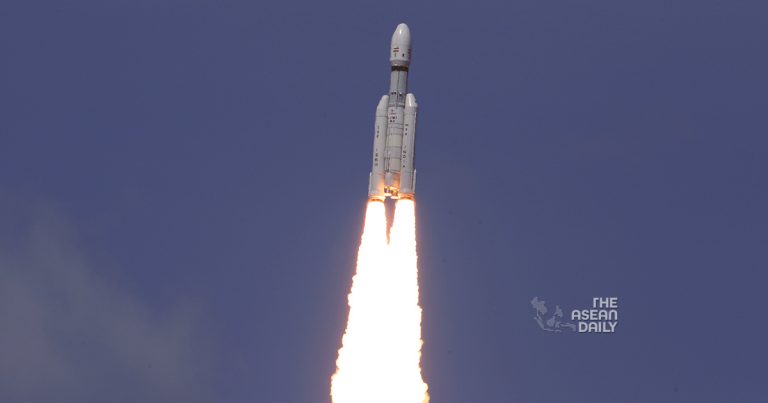23-8-2023 (NEW DELHI) India achieved a major milestone in space exploration on Wednesday as it successfully landed a spacecraft near the moon’s south pole. This uncharted territory is believed to hold significant reserves of frozen water and precious elements, establishing India’s growing prowess in space and technology.
At 6:04 local time, a lander carrying a rover touched down on the lunar surface, sparking cheers and applause among the space scientists gathered in the southern Indian city of Bengaluru. After a failed attempt nearly four years ago, India made history by becoming the first country to successfully land near the little-explored south pole region, joining the United States, the Soviet Union, and China in achieving a moon landing.
India’s triumph comes shortly after Russia’s Luna-25, which was also targeting the same lunar region, spun into an uncontrolled orbit and crashed. The failed mission would have marked Russia’s first successful lunar landing in 47 years. The head of Russia’s state-controlled space corporation Roscosmos attributed the failure to the lack of expertise resulting from the extended hiatus in lunar research following the last Soviet mission to the moon in 1976.
Across India, the world’s most populous country, people eagerly gathered around televisions in offices, shops, restaurants, and homes, expressing a mix of excitement and anxiety. Thousands offered prayers for the mission’s success, lighting oil lamps on the riverbanks, temples, and religious sites, including the holy city of Varanasi in northern India.
India’s own lunar craft, Chandrayaan-3 (meaning “moon craft” in Sanskrit), took off from a launchpad in Sriharikota, southern India, on July 14. The Indian Space Research Organization (ISRO) lauded this mission as a significant step forward for Indian science, engineering, technology, and industry, emphasizing its potential to fuel curiosity and inspire youth to explore the mysteries of space.
The south pole region of the moon has attracted the attention of several countries and private companies due to the possibility of permanently shadowed craters containing frozen water, which could be crucial for future astronaut missions. Chandrayaan-3’s six-wheeled lander and rover module are equipped with payloads designed to provide valuable data to the scientific community regarding the properties of lunar soil and rocks, including their chemical and elemental compositions.
India’s previous attempt to land a robotic spacecraft near the moon’s south pole ended in failure in 2019. While the spacecraft successfully entered lunar orbit, it lost contact with its lander during its final descent, resulting in a crash and the failure to deploy a rover for water exploration. A failure analysis report submitted to the ISRO attributed the crash to a software glitch.
With India’s emergence as the world’s fifth-largest economy and a nuclear-armed nation, Prime Minister Narendra Modi’s government is keen to showcase the country’s rising technological and space capabilities. A successful moon mission aligns with Modi’s vision of an ascending India asserting its position among the global elite and would undoubtedly boost his popularity ahead of an important general election next year.
The anticipation for a successful landing grew as a result of Russia’s recent failure and China’s ongoing pursuit of new milestones in space. In May, China successfully launched a three-person crew to its orbiting space station and aims to send astronauts to the moon before the end of the decade. Relations between India and China have been strained since deadly border clashes in 2020.
Multiple countries and private companies are currently engaged in a race to land spacecraft on the lunar surface. In April, a Japanese company’s spacecraft crashed during an attempted landing on the moon. Similarly, an Israeli nonprofit’s spacecraft was destroyed upon impact in a similar mission in 2019.
Japan plans to launch a lunar lander to the moon this weekend as part of an X-ray telescope mission, while two U.S. companies are also competing to land spacecraft on the moon by the end of the year, one of them targeting the south pole. Meanwhile, NASA has plans to land astronauts at the lunar south pole in the coming years, taking advantage of the frozen water reserves within craters.




